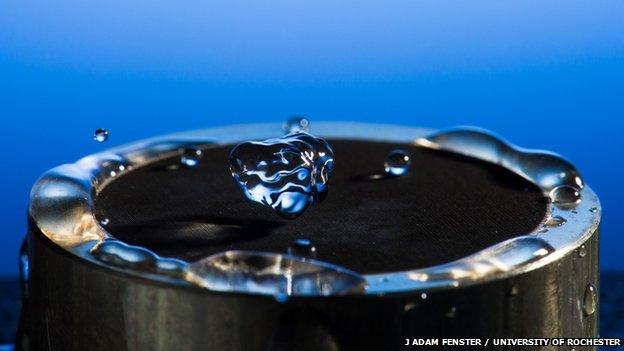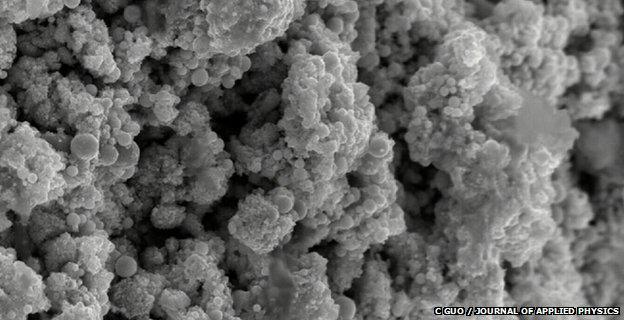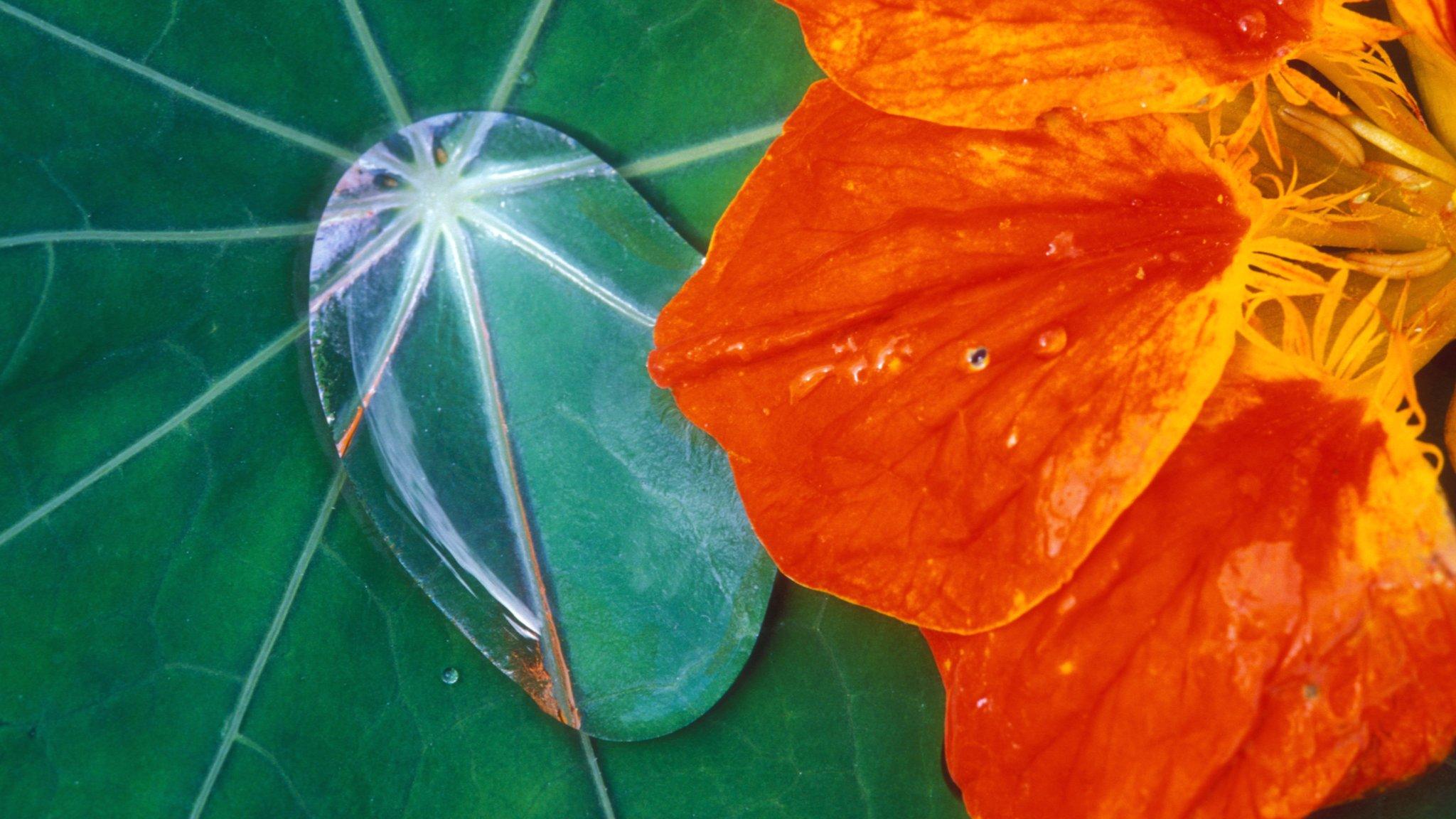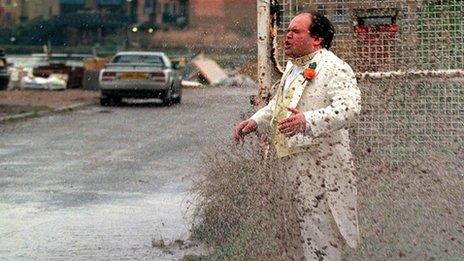Laser-etched metal 'bounces' water
- Published
Slow motion footage shows water droplets bouncing off a sample of treated platinum
Physicists in the US have created metal surfaces that repel water to the extent that droplets bounce away.
They sculpted the surface of small pieces of platinum, titanium and brass using a very high-powered laser.
The materials "self-clean" because water droplets gather dust particles before they slide away.
If it can be scaled up, it could help produce hygienic, easily maintained devices - from solar panels to toilets - that do not rust or ice up.
The team, from the University of Rochester in New York, reported their findings in the Journal of Applied Physics, external.
Many efforts to produce such "superhydrophobic" surfaces have relied on coatings, but this approach permanently changes the shape of the metal's surface.
"The structures created by our laser on the metals are intrinsically part of the material surface," said senior author Prof Chunlei Guo.
"The material is so strongly water-repellent, the water actually gets bounced off. Then it lands on the surface again, gets bounced off again, and then it will just roll off from the surface."

The blackened metals could be useful for making non-rusting devices, or collecting rainwater efficiently
Prof Guo's team etched parallel grooves into the metals, 0.1mm apart, using rapid pulses of a laser beam that are extremely strong but extremely brief - lasting just a few quadrillionths of a second.
On close inspection, these grooves are covered in complex "nanostructures" that give the surface its remarkable properties.
Immediately following the treatment, water actually sticks very easily to the metal surface. But as soon as it comes into contact with air, it becomes almost impossible to get wet.
Slippery slope
Water droplets released from 2cm above the surface bounce back to a height of 5mm, maintaining 30% of their energy. And any drops sitting on the surface, given half a chance, will slide away.
These materials are even slipperier than Teflon, a hydrophobic material well-known from non-stick frying pans.
To make water droplets slide off a Teflon surface, it must be tilted to nearly 70 degrees; these new laser-etched materials will shed droplets at an angle of just four degrees.

Complex structures are superimposed on the tiny grooves - seen here with an electron micrsocope
The researchers also covered some samples in dust from a vacuum cleaner. Three water droplets cleaned half the dust particles away, while 10-15 left the metal surface completely clean and dry.
Prof Guo hopes that his research will help make better devices for collecting rain water, or easily-cleaned, hygienic surfaces for medical or sanitary purposes, particularly in developing countries.
For these hopes to come to fruition, the technique needs to get faster and cheaper; currently patterning a one-inch square of metal takes one hour.
Prof Philip Moriarty from the University of Nottingham, a member of the Institute of Physics' Nanoscale Physics and Technology Group, said the work was "intriguing" but would not change the world overnight.
"I don't think it's going to be done on an industrial scale any time soon," he told the BBC.
"There are many ways of creating superhydrophobic surfaces," he added, including chemical etching and the use of electron beams, which might be more straightforward.

Water droplets slide off the surface when it is gently tilted - and bounce off when they are dropped onto it
"Femtosecond laser pulses are always interesting because you dump so much power into the surface that you really do a lot of damage. That's what they're doing - they're creating lots and lots of microstructures and nanostructures on the surface."
Several years ago, work in Prof Guo's laboratory already showed that this sort of laser treatment could blacken a variety of metals - including platinum, external and gold, external.
"By roughening up the surface, you change the optical properties dramatically," Prof Moriarty explained.
"The advance of this work seems to be that they've taken the same technique... and looked at the surface energy properties.
"The most interesting aspect is that you're modifying the optical properties and the wetting properties in concert."
Follow Jonathan on Twitter, external
- Published21 November 2013

- Published26 April 2012

- Published6 November 2013
.jpg)
- Published23 November 2012
